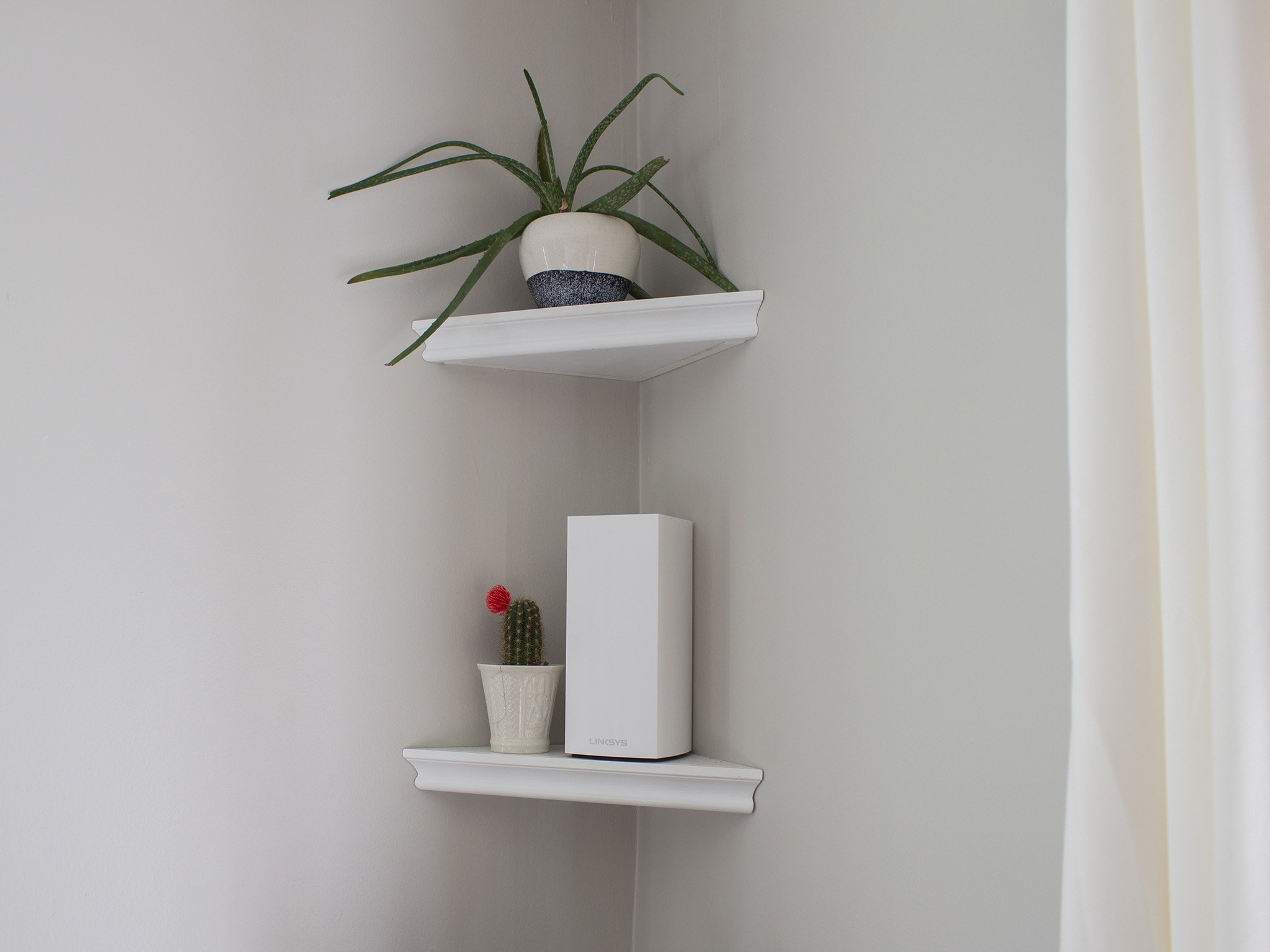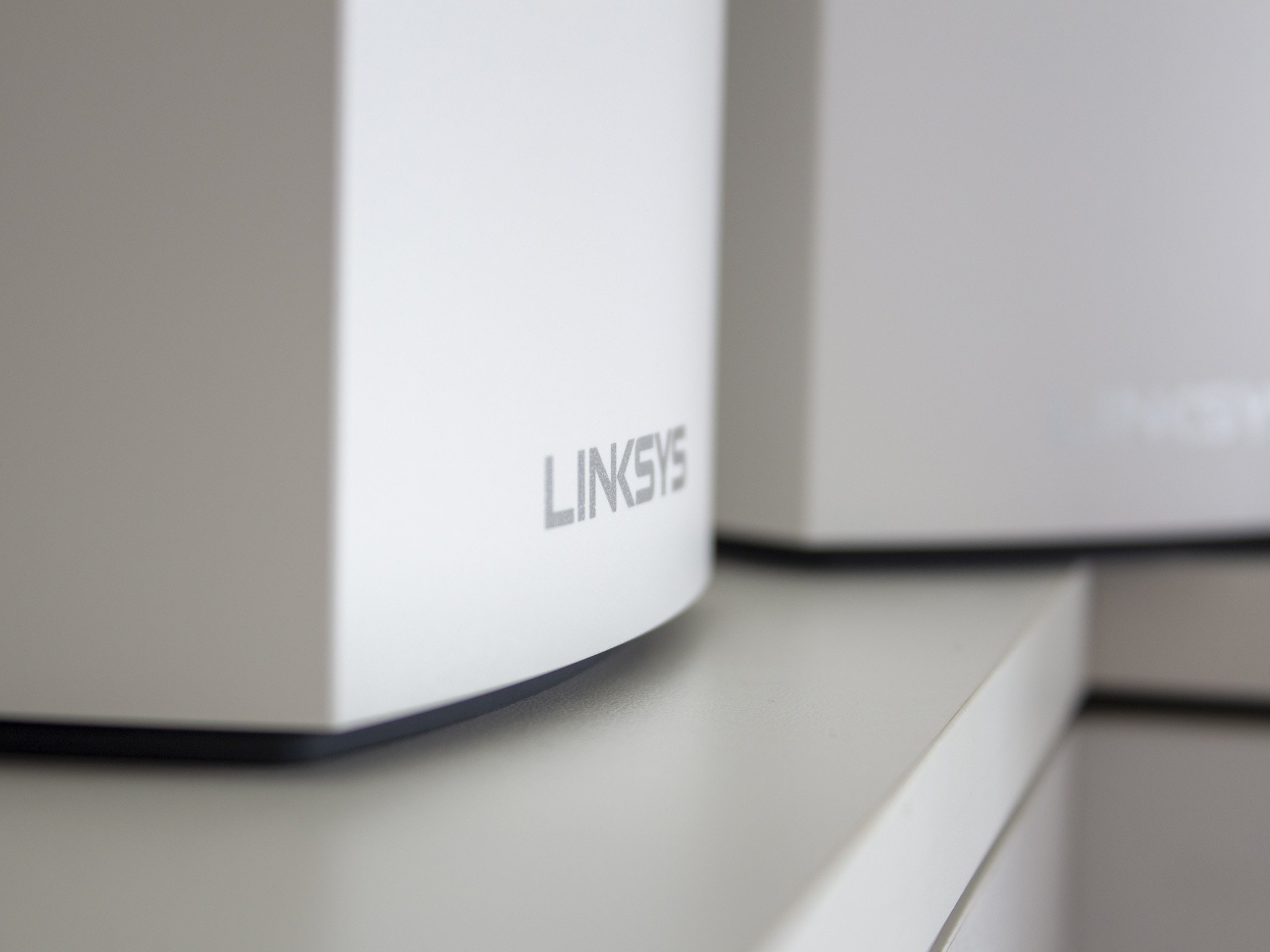What to know about the Linksys Atlas Pro 6 vs. Linksys Velop MX10
- Wi-Fi 6 on every band
- 160MHz and DFS support
- Lower price
- Compatible with other Linksys Velop nodes
- Dual-band connection
- Fewer Ethernet ports than the MX10
- No USB connectivity
For the first few years, mesh systems were on the market, tri-band connections were a must, but with faster 160MHz bands and access to DFS, routers can get a lot more done with just the two bands. The Linksys Atlas Pro 6 puts this newer tech to work with a system with higher overall speeds at AX5400 and a wide 5GHz band with more than enough bandwidth to handle most internet connections without breaking a sweat.
Tri-band meshLinksys MX10 Velop AXPros- Tri-band Wi-Fi 6 connection
- Fast 2.4GHz band
- Great coverage
- Compatible with other Linksys Velop Nodes
- One 5GHz band is Wi-Fi 5
- Quite expensive, even compared to other brands
The MX10 Velop AX was one of the earliest Wi-Fi 6 mesh systems, and it was impressive for the time, but its tri-band connection still relied on Wi-Fi 5 to get the job done. This system supports Wi-Fi 6 on two of its three bands, so it's no slouch, but other systems have caught up with it since launch and have also come in at a lower price, including the Atlas Pro 6. Even so, the MX10 is still a very fast router for the right price.
The Linksys Atlas Pro 6 is cheaper and faster than the MX10 Velop AX despite its dual-band connection. Still, it's not a clean sweep as the MX10 has an extra Ethernet port and a USB 3.0 port on its nodes compared to the Atlas Pro, with just three ports for LAN devices and no USB option. The Atlas Pro also comes in with a lower estimated range at just 5,400 square feet compared to the 6,000 of the MX10. Still, either system should have no problem covering most houses.
Linksys Atlas Pro 6 vs. Linksys MX10 Velop AX: Wi-Fi 6 on every bandIf you scroll through the spec list for the MX10 Velop AX, one thing that immediately jumps out is the 1,733Mbps connection speed on the second 5GHz band. This speed is due to a Wi-Fi 5 (802.11ac) connection used on that band. This compromise isn't uncommon in early Wi-Fi 6 systems with other early Wi-Fi 6 mesh routers like the AmpliFi Alien and the Asus RT-AX92U also keeping a Wi-FI 5 band around.
A couple of years ago, this was a good compromise since most wireless devices were still using Wi-Fi 5. Still, with the majority of the best Android phones and even the best Chromebooks now being equipped with Wi-Fi 6, there's not much reason to support the older devices with an exclusive band anymore. Furthermore, with more devices utilizing the Wi-Fi 6 band, the load-balancing effects of the additional band are reduced.
The Atlas Pro 6 decreases the number of bands to just two. Still, with higher overall speeds, performance between the two systems should be similar, especially if your wireless devices are using Wi-Fi 6 more.
| Linksys Atlas Pro 6 | Linksys Velop MX10 | |
|---|---|---|
| Wireless | AX5400 WI-Fi 6 600Mbps @ 2.4GHz 2804Mbps @5GHz | AX5300 Wi-Fi 6 1147Mbps @ 2.4GHz 2402Mbps, @5GHz 1733Mbps @ 5GHz (Wi-Fi 5) |
| Ethernet ports | 1x gigabit WAN 3x gigabit LAN per node | 1x gigabit WAN 4x gigabit LAN per node |
| Coverage | 5,400 square feet (2-pack) | 6,000 square feet (2-pack) |
| USB | None | 3.0 Type-A |
The listed 1,733Mbps speed for the 5GHz seemed very fast, but it's worth remembering that most devices only support a max speed of 867Mbps on Wi-Fi 5. This includes nearly all Android phones and tablets. With a solid signal, some laptops support higher Wi-Fi 5 speeds at 1,300Mbps or even 1,733Mbps.
Similarly, most Wi-Fi 6 devices only support 1,201Mbps though some higher-end devices like the Galaxy S21 Ultra, Zenfone 8, and Pixel 6 support up to 2,402Mbps thanks to their more advanced chipsets. These devices also support Wi-Fi 6E, but there are still benefits to the more advanced Wi-Fi capabilities for 5GHz Wi-Fi 6 connections.
Linksys Atlas Pro 6 vs. Linksys MX10 Velop AX: Coverage and expansionThe coverage of these two mesh systems is roughly the same, with the MX10 system covering up to 6,000 square feet and the Atlas Pro covering up to 5,400 square feet. It's important to take these numbers with a grain of salt because every house is different. The thickness of walls, positioning of HVAC equipment, local interference, and of course, interference from neighboring Wi-Fi routers can all reduce your effective coverage.
With a mesh system, it's always a good idea to overbuy on coverage since your nodes will need to be able to communicate with one another. This will lead to some overlap in coverage. Luckily, these systems have great compatibility with other Linksys mesh nodes. Linksys doesn't distinguish between the primary and remote nodes like Netgear, so that you could combine multiple Linksys mesh kits. This is helpful if you need just a bit more coverage as you don't have to seek out a specific satellite model.
Keep in mind that expanding a mesh system works best when the remote nodes can communicate directly with the primary node. While daisy chaining is possible, it can add latency and reduce speeds on your setup. Finally, if your home is wired for gigabit Ethernet or you're willing to do so, you can use a wired backhaul to connect your nodes, bypassing a strong wireless connection between them.
One last thing to think about is 2.4GHz devices. Many smart home devices like smart outlets, light bulbs, and security cameras use 2.4GHz to get connected. This is generally due to the 2.4GHz connection's greater penetration compared to 5GHz. This is useful for these devices since they're often mounted near or inside walls which can wreck a 5GHz signal. The MX10 allocates 1174Mbps to 2.4GHz devices, while the Atlas Pro 6 only offers 600Mbps. While 600Mbps is likely more than enough for your smart devices, it's worth holding on to the receipt if your speed suffers on these devices.
Linksys Atlas Pro 6 vs. Linksys MX10 Velop AX: Linksys' softwareLinksys keeps its software very simple with just the basic settings available in the app and web interface. While this will be frustrating for advanced users, this simplicity can be reassuring to those that don't want to get into a mess of hard-to-understand protocols. The initial setup is simple and speedy on both systems using the Linksys router app. They can also be set up in a web browser if you're more comfortable with that.
Compared to some other systems like those from TP-Link and Asus, settings for parental controls are straightforward. However, if you're looking for a robust router with parental controls, you should consider another one of the best Wi-Fi 6 mesh systems from Asus or TP-Link.
Linksys Atlas Pro 6 vs. Linksys MX10 Velop AX: Which should you buy?When it comes down to it, both of these systems offer more than enough power for most homes with plenty of speed for 4K streaming, fast web browsing, and even video conferencing. The Atlas Pro 6 comes out ahead thanks to its full Wi-Fi 6 connection allowing for more speed on the 5GHz band with compatible devices. While the extra band on the MX10 system can help spread the load over two different 5GHz bands, the Atlas Pro has access to a wider band at 160MHz and DFS channels allowing for more flexibility, especially in congested areas.
Full Wi-Fi 6 connectionLinksys Atlas Pro 6Fast Wi-Fi 6 with 160MHz and DFS support
$450 at B&H$600 at Best Buy (3-pack)
The Atlas Pro 6 is a very fast dual-band Wi-Fi 6 mesh system with solid coverage and great support for fast Wi-Fi 6 devices.
Tri-band meshLinksys MX10 Velop AXTri-band connectivity with plenty of speed
The MX10 Velop is a strong mesh system though it may start to show its age if you've upgraded most of your devices to Wi-Fi 6.



